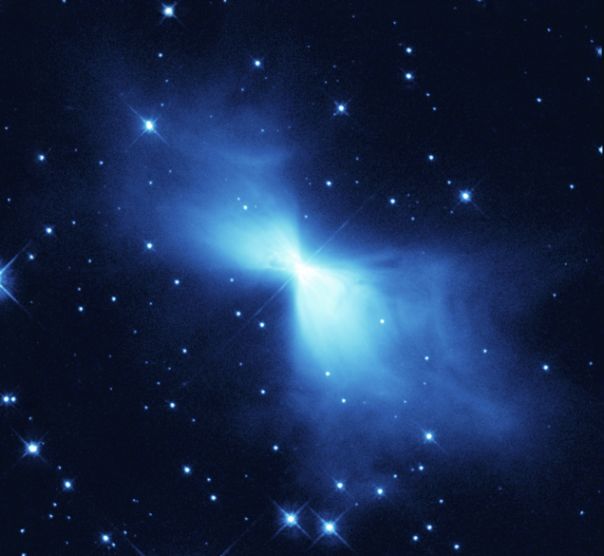Cold Wind from the Boomerang Nebula

Credit & Copyright: R. Sahai and J. Trauger
(JPL),
NASA/ESA
Explanation:
A cold wind blows from the central star of the Boomerang Nebula.
Seen here in a detailed false-color image recorded in 1998 by
the
Hubble Space Telescope, the
nebula lies about 5,000 light-years away towards the
grand southern constellation
of Centaurus.
The symmetric cloud appears to have been created by a
high-speed wind of gas and
dust blowing from an aging central star at speeds
of nearly 600,000 kilometers per hour.
This rapid expansion has cooled molecules in the nebular gas to
about one
degree above absolute zero - colder than even the
cosmic
background radiation -
making it the coldest region observed in
the distant
Universe.
Shining with light from the central star reflected by dust,
the frigid Boomerang Nebula
is
believed to be a star or stellar system
evolving toward the
planetary nebula phase.
Authors & editors:
Robert Nemiroff
(MTU) &
Jerry Bonnell
(USRA)
NASA Web Site Statements, Warnings,
and Disclaimers
NASA Official: Jay Norris.
Specific
rights apply.
A service of:
LHEA at
NASA /
GSFC
& Michigan Tech. U.

